
Our narrators at the Oral History Center are often experts in their chosen fields of engagement—perhaps as a preeminent scientist, a pioneering lawyer, an acclaimed author, or an outstanding executive. These accomplished narrators cultivated their particular expertise throughout their lives, often in dedication to creating new knowledge or perhaps by revealing new ways of orchestrating and operating in the world. In American culture, we’re often encouraged to imagine these experts as singular actors, lone wolves who separated themselves from the pack to achieve their individual successes. Occasionally, that’s true. For some narrators, we could be forgiven for considering their advanced scientific knowledge or their expertise in jurisprudence as singular, sovereign, sui generis, and almost abstract. And perhaps the standard oral history interview format — with its focus on an individual recounting their particular experience — lends itself to seeing these experts as independent actors, perhaps even separate from society. However, in my experience this past year, my oral history interviews with experts have emphasized how human connections and deeply personal interactions provided the firm bedrock for these experts’ intellectual advancements and accomplishments.
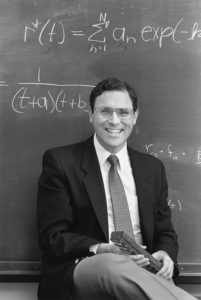
Throughout 2019 and into the start of 2020, I had the honor of completing in-depth oral history interviews with several highly accomplished experts. These experts included the following people in order of when we completed their final interview session: Michael R. Peevey, an entrepreneur and former president of the California Public Utilities Commission; Alexis T. Bell, an internationally renowned scientist in UC Berkeley’s Department of Chemical and Biomolecular Engineering; Michael R. Schilling, an analytical chemist and head of Materials Characterization at the Getty Conservation Institute in Los Angeles; Robert Praetzel, a lawyer and conservationist whose legal battles helped preserve the Marin Headlands that are now part of the Golden Gate National Recreation Area; Nancy Donnelly Praetzel, a graduate of UC Berkeley in 1953 who worked in the early years of the commercial airline industry; Samuel Barondes, a medically trained scientist who helped pioneer the field of biological psychiatry; H. Anthony Ruckel, a pioneer of environmental law who later served as president of the Sierra Club; Lawrence D. Downing, a lawyer and environmentalist who also became president of the Sierra Club; and John Briscoe, an internationally recognized trial lawyer with numerous cases before the US Supreme Court, as well as a published poet, historian, and restauranteur. Throughout 2019 and into 2020, my time with these experts occurred across forty-five separate interview sessions that recorded over 110 hours of oral history.
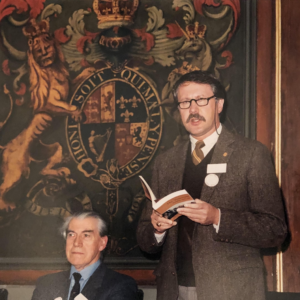
When I met these experts to conduct their oral histories, I frequently had two sets of realizations.First, absolutely, this individual is an expert and many of their accomplishments are exceptional. Yet, I also realized that their expertise was rarely something they framed as an individual accomplishment. The classic lone-wolf narrative of success simply did not align with the stories they shared about themselves. When these experts and I spoke by phone, when we planned together how to record their life narrative, when we sat face-to-face during recorded interview sessions, and when I listened closely to their stories, instead of hearing tales of purely individual achievement, I heard them share various ways their expertise was cultivated socially with the profound support or influence of others—dear friends, mentors, teachers, rivals, loved ones. Yes, these experts are all individuals with unique stories and perspectives to share; and at the same time, the cultivation of their expertise and their experiences as experts are extremely social, interpersonal, and sometimes intimate.
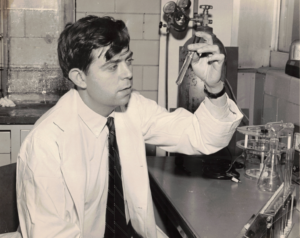
In commemoration of conducting their oral history interviews this past year, here are a few ways in which these narrators described the development of their expertise and successes as socially constructed endeavors:
Samuel Barondes formed life-long friendships with outstanding researchers and future Nobel-laureates at the National Institutes of Health. In his oral history, Barondes explained how his personal relationships helped launch his research career, where he applied the techniques of molecular biology to help establish the new field of biological psychiatry, which conceptualized mental illnesses as physical brain disorders requiring a multilevel approach ranging from genetic to psychosocial mechanisms.
Alexis T. Bell became an internationally recognized expert on heterogeneous catalysis, yet his initial research focused on plasma chemistry, not catalysis. Bell explained how, in the early 1970s, support from Gene Petersen, an older faculty member in chemical engineering, as well as collaborations with a graduate student named Ed Force, both played key roles in helping launch Bell’s now-storied career in catalysis research.

John Briscoe has argued legal cases before the California Supreme Court, the United States Supreme Court, and the Permanent Court of Arbitration in The Hague. Briscoe credits numerous mentors that became dear friends who helped advance his career, including legal legends like Philip C. Jessup, Stefan A. Reisenfeld, and perhaps most importantly Louis F. Claiborne. Briscoe and Clairborne met as rivals arguing on opposing sides in the US Supreme Court before developing a deep friendship in which they later became law partners as well as godparents to each other’s children.
Lawrence D. Downing’s leadership in the Sierra Club included working with his best friend and fellow Club officer Denny Shaffer to help establish leadership opportunities for other volunteers, as with their advocacy of the Club’s Grassroots Effectiveness Program in the 1980s. Downing also formed international friendships with founders of the John Muir Trust in Scotland, and together they protected Scottish wildlands while promoting the preservationist legacy of Sierra Club founder John Muir, who was born in Scotland.
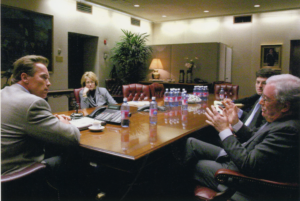
Michael R. Peevey forged strong social connections and collaborations throughout his career in labor economics, in government relations, in growing California’s energy industry, and while regulating it. As president of the California Public Utilities Commission (CPUC), Peevey teamed with Republican and Democratic governors as well as members of the “Energy Principles Group”—made up of the CPUC, the California Energy Commision, the California Independent System Operator, and the California Air Resources Board chaired by Peevey’s friend Mary Nichols—to help make California a world leader in confronting climate change.
Nancy Donnelly Praetzel has deep family roots in the Bay Area that extend at least to 1893 when her grandfather, Ernest Clayton, arrived from England. In the late 1930s through early 1950s, Nancy Praetzel and her sister Genie hiked through Marin County with their grandfather, who would then paint pictures of flowers that the girls collected. In 2013, a family collaboration between Nancy, Genie, and Nancy’s daughter Annie rediscovered and promoted Ernest Clayton’s wildflower paintings so that others could enjoy these family heirlooms depicting California’s fragile beauty.
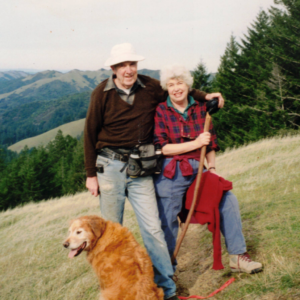
Robert Praetzel’s legal career ran the gambit from estate planning to defending protestors against logging old growth redwoods to winning the case that finally stopped the Marincello development project in Marin County. Praetzel credits his early legal training to exceptional professors in the “Sixty Five Club” at UC Hastings College of Law but most especially to Wallace “Wally” Myers, an experienced lawyer in Marin County who guided Praetzel how to build a successful and eclectic career.
Tony Ruckel won his first major environmental case in 1969, establishing an important legal precedent that ultimately enabled the designation and preservation of vast wilderness tracts across the United States. Ruckel recalled, “There wasn’t any guidance. There weren’t any directions. We couldn’t go to a casebook, or open a volume and say, ‘Hey, this is authority for what we’re trying to do.’” As a result, Ruckel and other Sierra Club pioneers of environmental law relied on each other to develop and expand their expertise.
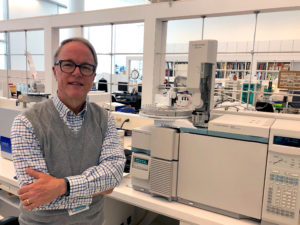
Michael Schilling applies his chemical-analysis expertise to extensive collaborations with art curators and art conservators around the world. Understanding the surface chemistry of art materials, as well as how and why the artist created their art, are essential for devising safe and ethical treatments to conserve or restore art. “You need all of that knowledge,” Schilling explained, “to really tell the entire story of an object or an artifact,” and combining that knowledge requires teamwork.
All the expert oral history narrators I recorded this past year repeatedly emphasized the importance of their interpersonal relationships and collaborations in their own accomplishments. Their own stories about creating new knowledge and achieving great successes reiterate how knowledge, as well as material things, are the product of historical events, social forces, and ideologies. These narrator’s stories encourage us to understand the construction and application of expertise as a deeply social endeavor. Thank you to all the narrators listed above—as well as those from years past and those we’ll interview in the future—for sharing their expertise and for collaborating with all of us at the Oral History Center.
— Roger Eardley-Pryor, PhD